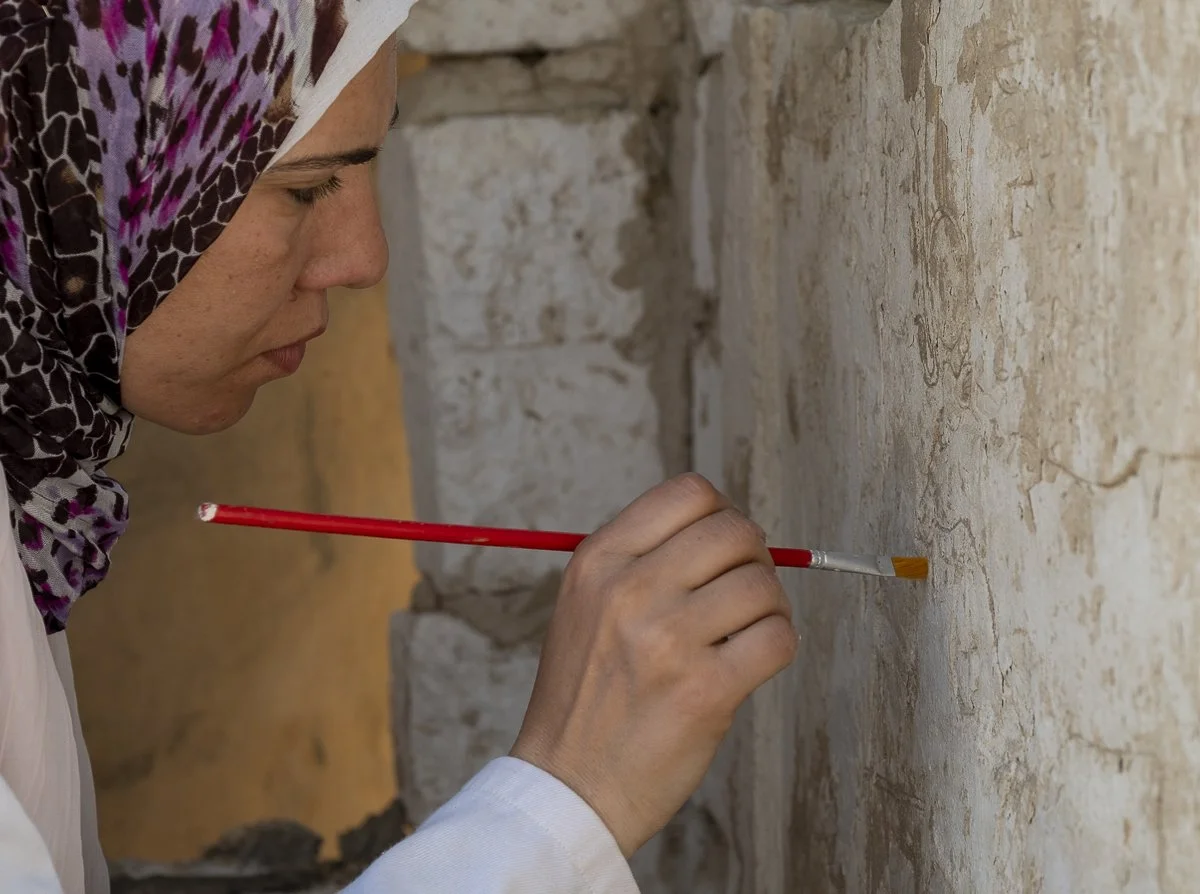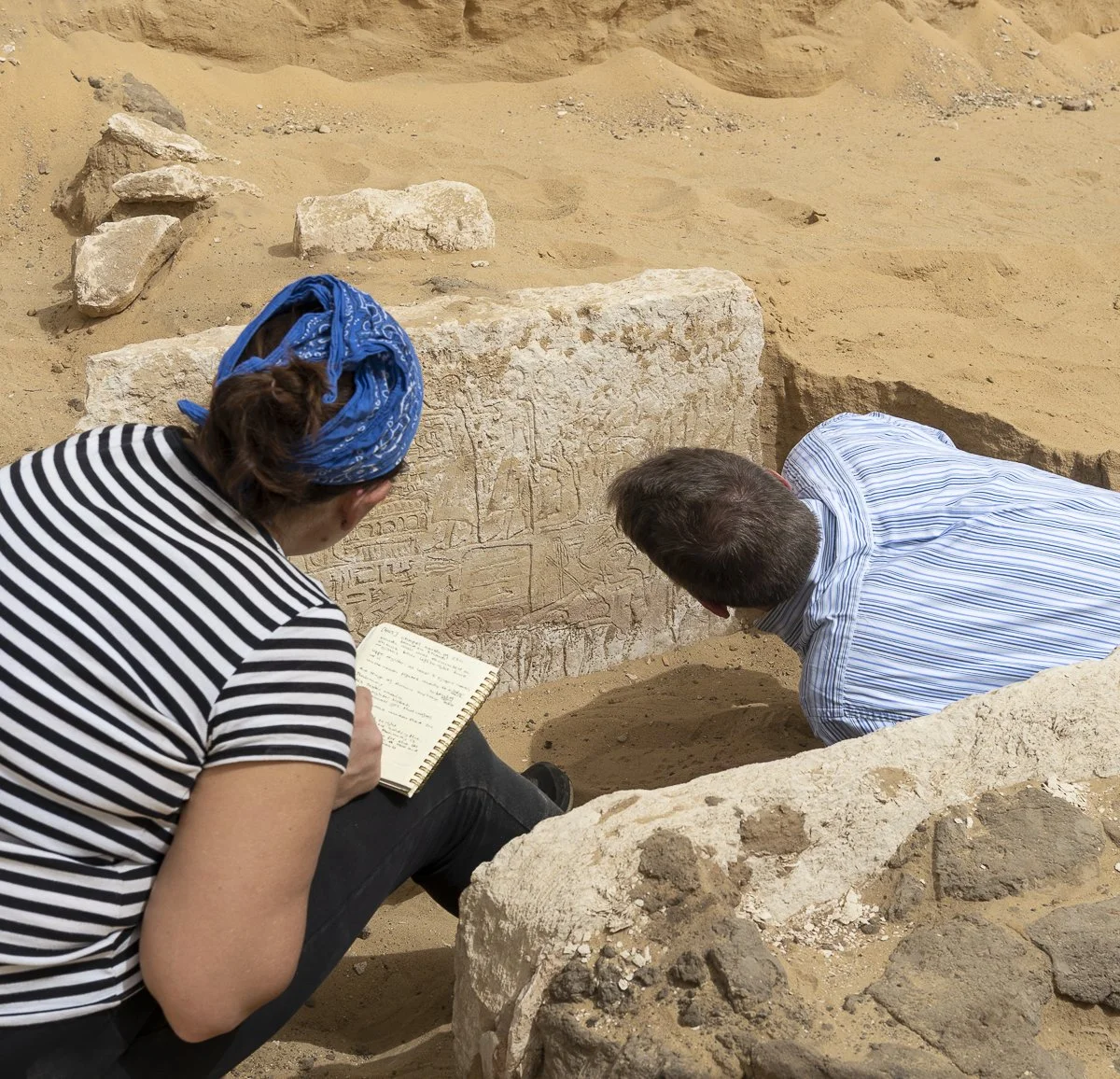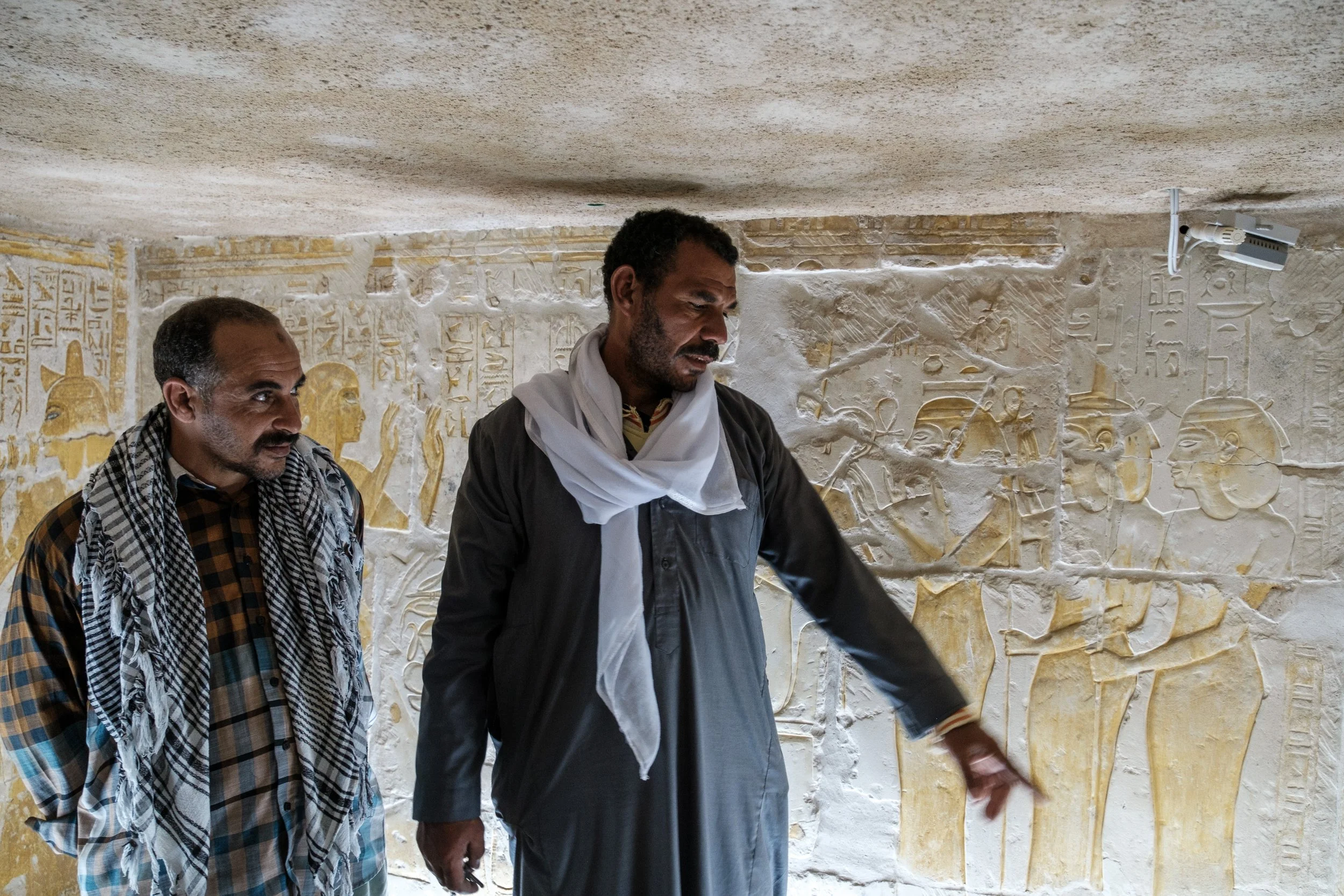Saqqara Diary 2023 – Fifth week
The Digging Diaries tell the joint mission of Museo Egizio and Rijksmuseum of Leiden to Saqqara.
The excavation project in Saqqara began in 1975. Until 1998 the Leiden Museum cooperated with the Egypt Exploration Society in London. Leiden University (since 1999) and the Bologna Archaeological Museum (since 2011) were also involved in the project.
In 2015, the Museo Egizio joined the project as a third partner.
After two and a half years of delay due to the Corona pandemic, the Leiden-Turin excavations finally resumed in the autumn of 2022. That season, the team excavated the monumental tomb of Panehsy. He was a dignitary in the reign of Ramesses II (c. 1279–1259 BC). The investigation continues this year in and around the tomb to find out more about Panehsy and the area where his tomb was built. In addition, previously excavated objects will be studied, such as fragments of wooden statuettes and coffins.
Digging Diary 5: Living Memories at Saqqara
Written by Christian Greco and Lara Weiss. Photos by: Nicola Dell'Aquila.
When you are read this, we will have finished our work and closed the site on Wednesday 22 March, just before the start of the feasting month of Ramadan, to take into account the fact that the physical work at the site would be very hard on our fasting Egyptian colleagues. We will have had our farewell team dinner, the international team will have scatters into various directions again, and will be home again in the hopefully not so cold weather and back at our desks finalizing our forthcoming field report publication. And our Egyptian workmen will be back home, too, working their ‘normal’ jobs as farmers, drivers or electricians.
We had a great season together, with again a wonderful team spirit among the Egyptian-international team and very good results.
We did not only manage to finish the excavation work on the tomb of Panehsy, which – thanks to a generous grant by the FRIENDS OF SAQQARA and the work of our Egyptian restorers Basma Zaghloul and Yousef Hammadi - received a decent restauration this season, but we also discovered that his tomb was about a century after his death, reused by a High Priest of the goddess Hathor, Mistress of the Sycomore, called Pinodjem, who might have lived in the 21st dynasty, and we found a new chapel.
Basma Zaghloul at work restoring the stela of Panehsy.
This season was also interesting in terms of visitors: we had several important encounters: our Leiden Head of Finances Guus Waals visited, and of course also inspected the results of the EU project that worked with the Egyptian colleagues to redesign some galleries in the Egyptian Museum, where he also saw Willem Pleyte, the former director of the RMO in the 19th century, whose bust stands in the garden of the Egyptian Museum. And on occasion of Guus’ visit, His Excellency the Dutch ambassador kindly invited us and several Egyptian colleagues for a nice dinner in his residence, where we met and chatted about our current and future cooperations. And there were more honorary visitors: His Excellency, the Italian ambassador and his wife marvelled at ‘our’ Saqqara tombs at a private tour with Christian.
This season we had our very first field trip together with some of our Egyptian colleagues. We hired a bus and went to Cairo to celebrate the first public screening of the film ‘Living memories: The workmen of Saqqara’ at the NVIC, that was made possible thanks to the great organisation of our colleague Fatma Keshk and the hospitality of the institute’s director Rudolf de Jong, we could end that wonderful night with drinks on the rood terrace!
'𝐋𝐢𝐯𝐢𝐧𝐠 𝐌𝐞𝐦𝐨𝐫𝐢𝐞𝐬: 𝐓𝐡𝐞 𝐖𝐨𝐫𝐤𝐦𝐞𝐧 𝐨𝐟 𝐒𝐚𝐪𝐪𝐚𝐫𝐚' is a short film by the Leiden-Turin Expedition to Saqqara that was made by: Fatma, Ashraquet Bastawrous and Servaas Neijens and presents the memories of some of the workmen being involved in 50 years of the Leiden-Turin Expedition to in Saqqara. Instead of taking our own perspective as usual, we had the aim to document and indeed value the vital contribution of a major group of these professionals and to link their work to their historical legacy since the late 19th century. In the film our Egyptian colleagues speak about their work as technical workmen, foremen, restoration workmen and also about their passion to excavate, their inheritance of the profession and about their daily routine on the site and how they experienced the work with us and our predecessors.
Christian Greco and Lara Weiss reading the texts in the newly discovered tomb chapel.
An excavation site is a workplace, but it is also it is greater than that. We make friends with ‘our workmen’ and they make friends with us, and among themselves, if they are not already linked by family relations. The close ties between the workmen are clearly seen in their friendship inside and outside the archaeological site. The fact that they all live in Saqqara or in its close surroundings creates through time professional but also social bonds. Workmen are relatives, neighbours and friends before becoming workmates, and they become our workmates and friends for generations. Therefore ‘our’ site feels like a second home where we have been working together for most or all of our professional lives.
Therefore, the end of this season fits also a Dutch saying well, namely that we are leaving with a laughing and a crying eye. Why? Because this was our last season together as field directors because Lara will take up her new position as managing director of the Roemer- und Pelizaeus Museum in Hildesheim (Germany) by the 1st of May and is hence leaving not only the Leiden Museum, but also her position as co-field director of the Leiden-Turin Expedition to Saqqara. Good luck Lara and thank you for all you have done! We will be waiting for your visits, you are the soul of this project. But no worries! Other great colleagues are already lined up to take over. The RMO is in the middle of the selection procedure of the new curator as we speak. Exciting times for everybody. Living memories also for us. So stay tuned.
Assam Sayed Ahmed Taha and Rafa’at ‘Eid ‘Abdel Karim Morsi el-Kis in the tomb of Maya.
Acknowledgements:
We would like to acknowledge and express our gratitude and appreciation to all Egyptian and international team members, the Ministry of Tourism and Antiquities, with special thanks to Dr Nashwa Gaber and Dr Mohammed Youssef; the Dutch Research Council, the Impact funds of the Faculty of Humanities, Leiden University, the two Museums, the Museo Egizio, Turin, Italy and the National Museum of Antiquities, Leiden, The Netherlands.
We hope to show the film soon in Leiden and Turin.
Christian Greco, Lara Weiss, and Salah Hassaballah ready to pay the workmen their well-deserved weekly salary.





